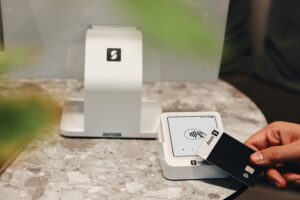While digital marketing continues to evolve, the fundamental idea of understanding your target audience remains crucial, and this concept originates from traditional marketing practices. One of the most enduring legacies of traditional marketing is the creation of buyer personas—fictional representations of your ideal customers that help businesses understand their audience on a deeper level.
Buyer personas were once built around simple characteristics such as age and gender, but modern marketing tools have enabled businesses to build much more detailed profiles. These profiles not only help identify who your customers are but also shed light on their motivations, behaviors, and obstacles throughout their buyer’s journey.
To create detailed buyer personas, it is essential to analyze customer feedback and support requests to uncover recurring themes and pain points. Methods like social listening can also gauge customer perceptions and preferences. Let’s dive into how to create effective buyer personas to enhance your marketing strategy, tailor your advertising, and improve customer experience.
What Are Buyer Personas?
A buyer persona, also known as a customer persona, is a semi-fictional character that represents a segment of your target audience. Built through detailed research, customer personas help businesses understand and empathize with their customers. Each persona includes key demographics, motivations, pain points, goals, and buying behaviors that reflect your real-life customers.
For example, consider a typical profile named “Marketing Mary,” a marketing manager in her mid-30s who values data-driven insights. By knowing Mary’s job title, what she values, her challenges, and her decision-making process, you can create content and marketing campaigns that speak directly to her needs.

Why Do Buyer Personas Matter?
- Enhanced Personalization: Buyer personas allow you to tailor your messaging and campaigns to resonate more effectively with different audience segments.
- Targeted Marketing: By understanding your ideal customer and personas, you can allocate resources more effectively, using the right channels and messaging.
- Better Product Development: Knowing your ideal customer and personas helps shape product features that directly address your customers’ needs.
- Improved Sales Alignment: Personas provide your sales team with insights to approach prospects more effectively, improving close rates.
Understanding Your Target Audience
Understanding your target audience is crucial in creating effective buyer personas. It involves gathering data and insights about your ideal customers, including their demographics, behaviors, interests, and pain points. This information helps you create a detailed profile of your target audience, which can be used to inform your marketing strategies and improve customer engagement.
To understand your target audience, you can use various methods such as:
- Conducting Surveys and Focus Groups: Directly ask your customers about their preferences, challenges, and buying behaviors. This firsthand information is invaluable in creating accurate buyer personas.
- Analyzing Customer Feedback and Reviews: Look at what your existing customers are saying about your products or services. This feedback can highlight common pain points and motivations.
- Using Social Media Listening Tools: Monitor online conversations to see what your target audience is talking about. Tools like Hootsuite or Brandwatch can help you gather insights from social media platforms.
- Creating Buyer Personas Based on Existing Customer Data: Use data from your CRM system to identify patterns and trends among your current customers. This data-driven approach ensures your personas are grounded in reality.
By understanding your target audience, you can create buyer personas that accurately represent your ideal customers. This, in turn, helps you tailor your marketing efforts and improve customer satisfaction.
Step 1: Define Basic Demographics
Start with foundational demographics, which provide the broad context of your personas. Understanding your target customer is crucial for effective marketing and product development. Gather the following data to form the basis of your personas:
- Location: Where do they live? Understanding their location can help tailor regional marketing efforts.
- Age: Are your personas young professionals, middle-aged homeowners, or retirees?
- Gender: While gender is not always a major factor, it can provide context when paired with other traits.
- Income Level: What is their income range? Knowing this can influence your pricing strategy.
- Education Level: High school, college, graduate degree? Education can impact purchasing decisions and preferences.
- Goals: What are their personal or professional aspirations?
- Identifiers & Mannerisms: What are their unique traits, behaviors, or lifestyles?
Step 2: Add Secondary Characteristics for Deeper Insight
After establishing the basics, enrich your personas by delving into secondary characteristics. Creating a detailed buyer persona is crucial as it not only incorporates demographic data but also delves into customer behavior to create a more relatable and effective representation of the target audience. Continuously refine these personas based on feedback and data insights to ensure they remain relevant over time. These help make your personas more detailed and nuanced:

- Needs: What are the primary needs driving their purchase decisions?
- Motivations: Why would they choose your product over a competitor’s?
- Pain Points: What problems are they trying to solve?
- Decision Criteria: What factors influence their purchasing decisions?
- Personality Archetype: Are they adventurous, cautious, analytical, or impulsive?
- Buyer’s Journey Process: How do they move from awareness to consideration to decision?
- Perceived Barriers: What stops them from making a purchase?
- Preferred Brands & News Sources: Which brands do they trust, and where do they get their information?
- Preferred Channels: Do they prefer social media, email, blogs, or word of mouth?
- Technology/Device Preferences: Do they primarily use mobile, desktop, or tablets?
- Quotes: Capture common phrases that express their mindset or attitudes.
Step 3: Conduct Thorough Research
Research is the cornerstone of building accurate buyer personas. Understanding prospective customers is crucial for crafting tailored marketing strategies. Consider these methods for gathering data:
1. Customer Surveys and Interviews to Analyze Customer Feedback
Collect insights directly from your customers. Ask questions about their buying experiences, motivations, and challenges. Be sure to align your questions with your business goals. For example, ask why they chose your product and what they considered before purchasing.
2. Analyze Website and Social Media Analytics
Use tools like Google Analytics, Facebook Insights, and Instagram Analytics to identify key customer demographics, behaviors, and interests. Examine which channels drive the most engagement and conversions.
3. Conduct Market Research
Observe your competition and their strategies. Understanding who your competitors are targeting can give you valuable insights into your own potential audience.
4. Leverage Customer Data from CRM Systems
Use data from your customer relationship management (CRM) software to identify patterns and trends in customer behavior, sales cycles, and communication preferences.
Step 4: Create Buyer Persona Templates
Once you’ve collected your data, it’s time to consolidate it into organized, digestible formats. Creating a free buyer persona template will help keep your information consistent and useful. Here’s how to structure a persona template:
- Persona Name: Give your persona a relatable name, like “Business Owner Bob” or “Tech-Savvy Tara.”
- Demographics: Include age, gender, location, education level, and income.
- Background: Describe their occupation, industry, family status, and lifestyle.
- Goals and Motivations: What are they trying to achieve? What drives their decisions?
- Challenges and Pain Points: What are their biggest frustrations?
- Preferred Channels and Content: What type of media do they consume, and where do they engage online?
- Objections and Barriers: What could prevent them from purchasing your product?
Step 5: Segment Your Audience by Personas
To make your personas actionable, create a buyer persona and segment your audience into broad categories based on shared traits. Grouping customers in this way allows you to tailor marketing messages to specific segments, rather than broadcasting a generic message to everyone.
For instance, instead of targeting “Working Professionals,” break them down into segments such as “Young Entrepreneurs,” “Corporate Climbers,” and “Remote Workers.” Each segment may require different messaging, product offerings, or marketing channels.

Key Attributes to Include in a Buyer Persona
When creating a buyer persona, there are several key attributes to include to make it effective. These attributes help you build a comprehensive and accurate profile of your target audience:
- Demographic Information: This includes age, location, occupation, income level, and education. These basic details provide a snapshot of who your target audience is.
- Psychographic Information: Delve into interests, values, lifestyle, and personality traits. Understanding these aspects helps you connect with your audience on a deeper level.
- Behavioral Information: Look at buying habits, pain points, goals, and aspirations. This information reveals what drives your audience’s purchasing decisions and what challenges they face.
- Pain Points and Challenges: Identify the problems or challenges your target audience encounters. Knowing these pain points allows you to position your product or service as a solution.
- Goals and Aspirations: Understand what your target audience aims to achieve. Whether personal or professional, these goals can guide your messaging and product development.
Including these attributes in your buyer persona will help you create a detailed and accurate profile of your target audience. This, in turn, can be used to inform your marketing strategies and improve customer engagement.
Step 6: Use Personas to Develop Tailored Content
The value of buyer personas extends into every aspect of your marketing strategy. Use personas to:
- Guide Content Creation: Tailor blogs, videos, and social media posts to address specific pain points or interests. By examining buyer persona examples, you can better understand how to create content that resonates with your audience.
- Enhance Advertising Campaigns: Create targeted ads that speak directly to different personas.
- Refine Email Marketing: Personalize email campaigns with content that resonates with each persona’s interests and needs.
Step 7: Apply Personas in Website Design
Your website should cater to different personas and guide them through the buying process effectively. Use personas to design personalized landing pages, calls-to-action, and user journeys that resonate with each group. For example:
- Landing Pages: Design specific landing pages that address each persona’s needs, with targeted messaging and offers.
- Calls-to-Action (CTAs): Use CTAs that are relevant to the persona’s stage in the buyer’s journey, such as “Learn More” for researchers or “Buy Now” for ready-to-purchase customers.
Step 8: Test and Iterate
Personas are not static; they evolve as your business grows and market conditions change. Implement A/B testing in your marketing campaigns to see what resonates best with your personas. Continuously refine your personas based on feedback, analytics, and new customer data.

- A/B Testing: Compare two variations of a campaign to see which performs better with each persona.
- Survey Follow-Up: Periodically survey your customers to gather updated insights on their preferences and behaviors.
Step 9: Keep Personas Accessible and Updated
Personas should be living documents that evolve with your business. Keep them updated and easily accessible to your marketing, sales, and customer service teams. Make a habit of revisiting your personas quarterly or bi-annually to ensure they are aligned with your current audience and goals.
Tips for Recruiting Buyer Persona Interviewees
Recruiting buyer persona interviewees can be a challenging task, but there are several tips to help you succeed. Here are some strategies to consider:
Using Your Current Customers
Your current customers are a goldmine of information. Reach out to them via email or phone and ask if they would be willing to participate in an interview. You can also use customer feedback and reviews to identify potential interviewees. Offering incentives, such as discounts or gift cards, can increase participation rates. By engaging with your existing customers, you gain insights from those who are already familiar with your brand.
Using Third-Party Networks
Third-party networks such as social media groups, online forums, and industry events can also be effective for recruiting buyer persona interviewees. Post about your research study and ask people to participate, or reach out to individuals directly. Platforms like LinkedIn, Reddit, and industry-specific forums are excellent places to find potential interviewees who fit your target audience profile. Leveraging these networks expands your reach beyond your current customer base.
Examples of Effective Buyer Personas
Here are some examples of effective buyer personas:
- Marketing Mary: A 35-year-old marketing manager responsible for managing a team and creating marketing campaigns. She values staying up-to-date with the latest marketing trends and seeks ways to improve her team’s productivity. Her pain points include time management and finding reliable data sources.
- Entrepreneur Eric: A 28-year-old entrepreneur looking to start a new business. He is interested in learning about the latest business trends and seeks resources to help him get started. His challenges include securing funding and building a customer base.
- Stay-at-Home Mom Sarah: A 45-year-old stay-at-home mom focused on saving money and improving her family’s health. She is interested in healthy recipes and products that can help her achieve her goals. Her pain points include budget constraints and finding trustworthy health information.
These buyer personas are effective because they are detailed and accurate, providing a clear understanding of the target audience’s needs and goals. By creating buyer personas like these, you can tailor your marketing efforts and improve customer engagement.
Pro Tips for Creating Buyer Personas
- Avoid Making Assumptions: Base your personas on data and research, not on assumptions or stereotypes.
- Be Specific but Flexible: While details matter, avoid overcomplicating your personas with too many specifics that limit their usefulness.
- Prioritize the Most Important Personas: Start with the two or three personas that have the most impact on your business.
- Include a Negative Persona: Consider creating a negative persona that represents customers you don’t want to target, such as those with high churn rates or low profitability.

Understanding Generational Differences in Buyer Personas: From Baby Boomers to Gen Alpha
Buyer personas become even more effective when tailored to the unique characteristics of each generation. Baby Boomers, Gen X, Millennials, Gen Z, and the emerging Gen Alpha each have distinct attitudes, behaviors, and psychodemographic traits influenced by the economic, technological, and social factors that shaped their lives. Here’s how each generation’s buyer persona differs and which behavioral and psychodemographic elements to consider.
Baby Boomers (1946–1964)
Baby Boomers are known for their loyalty, strong work ethic, and cautious adoption of technology. This generation values quality, dependability, and high customer service standards, preferring brands with longstanding reputations over trendy new options.
- Behavioral Traits: Less influenced by social media trends, Baby Boomers respond well to traditional customer service and in-store experiences. They appreciate clear, straightforward messaging that highlights value and reliability.
- Psychodemographic Elements:
- Financial Security: Many are focused on retirement, so messaging that emphasizes value and longevity appeals to them.
- Trustworthiness: Baby Boomers prioritize trusted brands with established reputations.
- Preferred Channels: Email, phone calls, and Facebook remain popular, and they engage with direct mail more than younger generations.
- Pain Points: Complexity and rapid tech changes can be barriers, so simplicity and familiarity are important.
Gen X (1965–1980)
Gen X is known for its pragmatism and independence, balancing new technology with traditional methods. As a highly influential generation in the workplace and family environment, Gen X values efficiency, convenience, and practicality in their buying experiences.
- Behavioral Traits: Tech-savvy but grounded, Gen X embraces both online and in-store shopping. They prefer a research-based approach, comparing products before making decisions.
- Psychodemographic Elements:
- Efficiency and Convenience: Gen X values solutions that make life easier and products that meet multiple needs.
- Brand Loyalty: While not as brand-loyal as Boomers, Gen X appreciates consistent quality.
- Preferred Channels: Email, Facebook, LinkedIn, and even SMS marketing resonate with this generation.
- Pain Points: This generation often feels overlooked in marketing, so recognizing their role as both decision-makers and caregivers resonates well.
Millennials (1981–1996)
Millennials are highly diverse, digitally engaged, and socially conscious. This generation is known for valuing experiences, transparency, and personalized interactions with brands that align with their values.
- Behavioral Traits: Millennials are digital natives and are highly influenced by online reviews and social proof. They respond well to personalized, tailored experiences and value brands that reflect social responsibility.
- Psychodemographic Elements:
- Social Responsibility: Ethical practices and sustainable products strongly appeal to Millennials.
- Personalization: Millennials expect highly tailored experiences, from targeted content to personalized offers.
- Preferred Channels: Instagram, Twitter, email, and influencer partnerships resonate with this group.
- Pain Points: They avoid brands perceived as disconnected or inauthentic and seek transparency.
Gen Z (1997–2012)
Gen Z is the first generation to grow up entirely in the digital age, making them experts at navigating digital platforms and highly selective in the brands they support. They prefer fast, engaging content, especially on visual and interactive channels.
- Behavioral Traits: Social media-centric, Gen Z spends significant time on Instagram, TikTok, and Snapchat. They value peer influence, quick content, and authentic interactions with brands.
- Psychodemographic Elements:
- Inclusivity and Diversity: Gen Z expects brands to embrace diversity and inclusivity and align with causes they support.
- Authenticity: They are drawn to brands that feel genuine, accessible, and transparent.
- Preferred Channels: Instagram, TikTok, Snapchat, and YouTube, with a preference for short-form video.
- Pain Points: Lengthy or outdated processes frustrate Gen Z, who expect seamless, tech-driven experiences.
Gen Alpha (2013–2025)
As the youngest consumers, Gen Alpha is already influencing purchasing decisions, particularly within family-oriented markets. Born into a highly connected, screen-focused world, Gen Alpha is expected to be the most technologically literate generation, with a preference for interactive, visual, and gamified content.
- Behavioral Traits: Gen Alpha has grown up with tablets, smart TVs, and on-demand entertainment, making them inclined towards interactive and gamified experiences. Influenced heavily by family, they are also becoming opinion leaders within the household.
- Psychodemographic Elements:
- Digital Literacy: With exposure to technology from an early age, Gen Alpha is expected to value brands that integrate digital interactivity.
- Education and Development: This generation’s parents often prioritize educational and developmental value, so products with skill-building elements resonate well.
- Preferred Channels: YouTube, TikTok, and platforms with child-safe, interactive elements appeal to them, with a heavy preference for visual storytelling.
- Pain Points: They are likely to experience lower patience levels for content that isn’t engaging or immediate, and they expect seamless, intuitive interfaces.
Key Behavioral and Psychodemographic Elements Across Generations
Across generations, these behavioral and psychodemographic considerations are key in creating relevant buyer personas:
- Buying Motivations: Baby Boomers prioritize reliability and value, Millennials and Gen Z lean toward ethical and social values, and Gen Alpha favors engagement and educational elements.
- Pain Points and Barriers: Boomers may be challenged by complex technology, Gen Z expects tech-driven immediacy, and Gen Alpha demands highly interactive and intuitive interfaces.
- Preferred Channels: Boomers prefer Facebook and email, Gen X leans on LinkedIn and traditional media, Millennials and Gen Z embrace social media, while Gen Alpha enjoys gamified and video-based platforms.
- Values and Worldview: Boomers and Gen X value stability and loyalty, Millennials and Gen Z focus on social responsibility, and Gen Alpha prioritizes digital engagement and interactive learning.
Creating personas that account for these generational differences enables more targeted and effective marketing. As each generation is shaped by unique experiences, aligning your strategy to resonate with these characteristics ensures your messaging, products, and customer experiences meet their expectations.
Conclusion: Why Buyer Personas Are Worth the Effort
Investing in well-researched buyer personas allows you to humanize your audience, craft targeted marketing strategies, and ultimately increase conversions. By understanding your customers’ needs, motivations, and pain points, you can create more personalized and effective marketing campaigns. When you speak directly to your audience’s challenges, your business not only provides value but also builds trust, loyalty, and long-lasting relationships.
Whether you are new to persona creation or looking to refine your existing profiles, following these steps will help you build comprehensive buyer personas that can guide your business strategy. Remember, the goal of buyer personas is not just to understand your customers better—it’s to use that understanding to create experiences that lead to happier customers and higher conversions.
Take the time to build detailed, actionable personas, and you’ll find your marketing efforts become more focused, personalized, and effective. Contact Elevato for help with your buyer personas!
